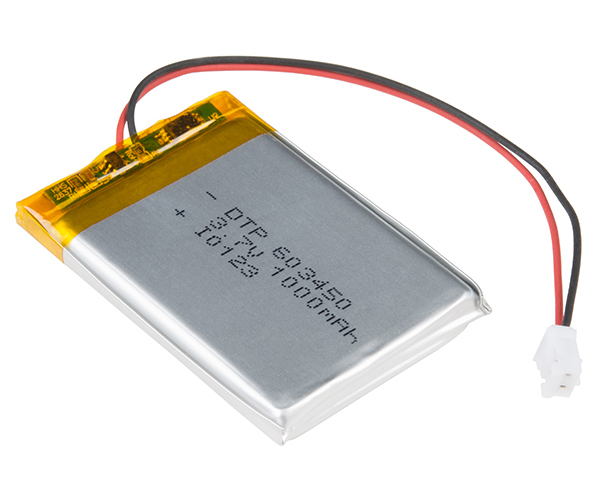What is a Battery?
Terminology
People often use a common set of terms when talking about a battery's voltage, capacity, current sourcing capability and so on.
Cell
A cell refers to a single anode and cathode separated by electrolyte used to produce a voltage and current. A battery can be made up of one or more cells. A single AA battery, for example, is one cell. Car batteries contain six cells at 2.1 V each.
Primary
Primary cells contain chemistry that cannot be reversed. As a result, the battery must be thrown away after it is dead.
Secondary
Secondary cells can be recharged and have their chemistry reverted back to their original state. Otherwise known as "rechargeable batteries," these cells can be used many times.
Nominal Voltage
The nominal voltage of a battery is the voltage stated by the manufacturer.
For example, alkaline AA batteries are listed as having 1.5 V. This article from Mad Scientist Hut shows their tested alkaline batteries start at about 1.55 V and then slowly lose voltage as they are discharged. In this example, "1.5 V" nominal voltage refers to the maximum or starting voltage of the battery.
This Storm battery pack for quadcopters shows the discharge curve for their LiPo cells starting at around 4.2 V and dropping to around 2.8 V as it discharges. The nominal voltage listed for most lithium-ion and LiPo cells is 3.7 V. In this case, "3.7 V" nominal voltage refers to the average voltage of the battery over its discharge cycle.
Capacity
A battery's capacity is a measure of the amount of electric charge it can deliver at a specific voltage. Most batteries are rated in amp hours (Ah) or milliamp hours (mAh).
Most battery discharge graphs show the battery's voltage as a function of capacity, such as these AA battery tests by PowerStream. To figure out if a battery has enough capacity to power your circuit, find the lowest acceptable voltage and find the associated mAh or Ah rating.
C-Rate
Many batteries, especially powerful lithium-ion batteries, express discharge current as "C-Rate" in order to more clearly define battery attributes. C-Rate is the rate of discharge relative to the battery's maximum capacity.
1C is the amount of current required to discharge the battery in 1 hour. For example, a 400 mAh battery supplying 1C of current would be supplying 400 mA. 5C for the same battery would be 2 A.
Most batteries lose capacity at higher current draws. For example, this product info graph from Chargery shows that their LiPo cell has less mAh at higher C-Rates.
MIT has a fantastic guide to battery specifications and terminology that goes much further that this overview.

